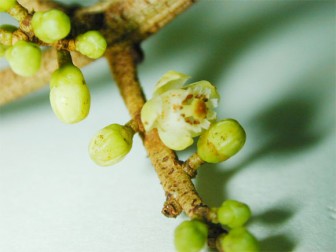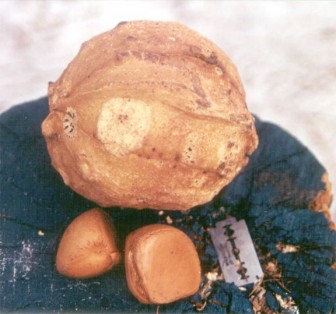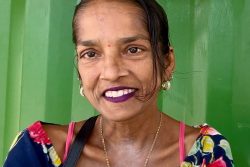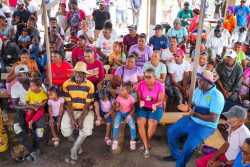Crabwood is a common component of season-ally inundated forests along streams and upland lateritic hills in Guyana. They are particularly common along smaller creeks and streams near the top of catchments where flooding is brief and intense.
There is a long history of crabwood exploitation in Guyana dating back to the early 19th century. Originally referred to as British Guianan Mahogany, due to its appearance and familial affiliation with the true neotropical (Swietenia spp) and African (Entandrophragma spp) mahoganies, the production of lumber from this species was only surpassed by that of greenheart and mora (Mora excelsa) up until the 1990s.
Crabwood achieves an excellent finished appearance, but lacks the natural resistance to decay, which typifies many other Guianan timber trees. It is for these reasons that it is mainly used in interior joinery, especially in the production of fine cabinetry, tables and shelving, and often in combination with other non-timber materials, such as Kufa (Clusia spp), Nibbi (Heteropsis spp) and Tibisiri (Mauritia flexuosa). It is also utilised as a sliced or peeled decorative veneer.
![]() Crabwood is a relatively light wood (nominal density = .67 g cm-3), which can be transported effectively by both road and river. Local demand within Guyana is good and opportunities for the export of sawn lumber or finished products can be considered favourable.
Crabwood is a relatively light wood (nominal density = .67 g cm-3), which can be transported effectively by both road and river. Local demand within Guyana is good and opportunities for the export of sawn lumber or finished products can be considered favourable.
Additionally, an oil (crabwood oil) produced from the seeds is used for medicinal purposes, as a natural insect repellent and hair oil. Crabwood oil costs approximately $1000 or more for a litre bottle. Locally, some pharmacies and communities have been processing crabwood oil into soap, candles and insecticidal washes for the national market.

Crabwood generally fruits at the end of April-May when rainfall increases in the Guianas. It is an important resource for terrestrial rodents, mainly the acuri/agouti (Dasyprocta leporina) and acouchy (Myoprocta prattii), but is also known to be consumed by brocket deer (Mazama spp), and peccaries. Floating seeds along waterways are often consumed by some fish species. In turn, crabwood seeds can only reach upland sites through the scatterhoarding (where the seeds are buried in different spots) habits of rodents like the acuri.

Rain forests are rich in biodiversity and are home to many different plants and animals as well as indigenous communities. Humans, even those who don’t live in the rain forest, rely on it for resources such as building materials (wood and lianas), medicine and fruits. Rain forests also provide essential environmental services for life on earth; they create soil as well as prevent soil erosion, produce oxygen though photosynthesis, maintain clean water systems, and are a key defence against climate change.
The Iwokrama Rain Forest is 371,000 hectares, located in the heart of Guyana. Our mission is to develop strategies for conservation and sustainable development for local people in Guyana and the world at large. We are involved in timber, tourism and training. Come and visit us in the rain forest or at http://www .iwokrama.org.








